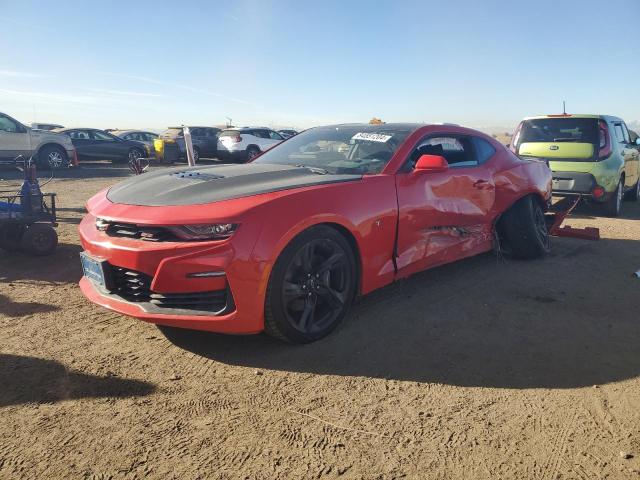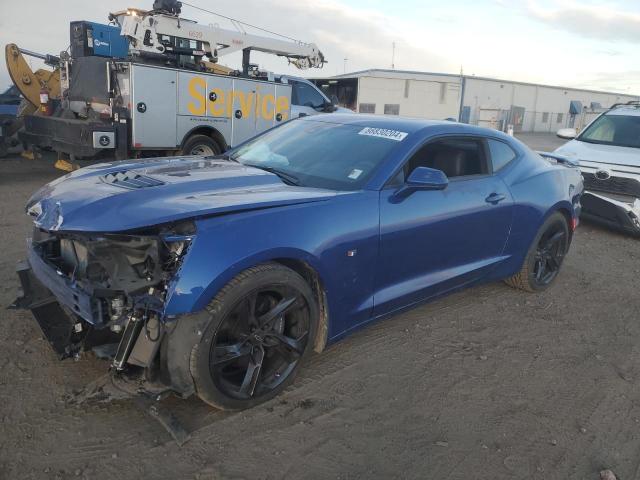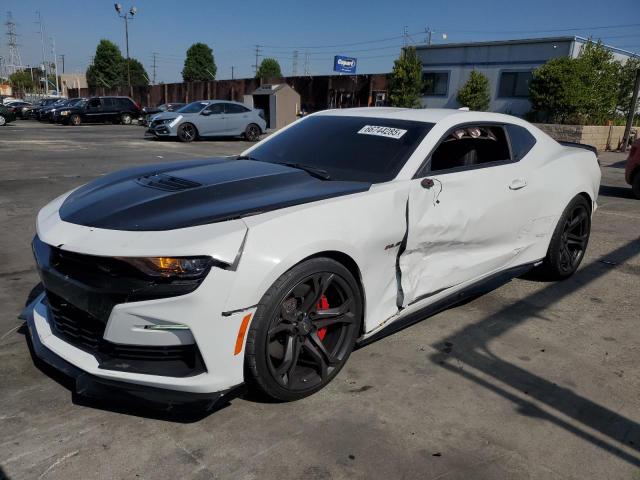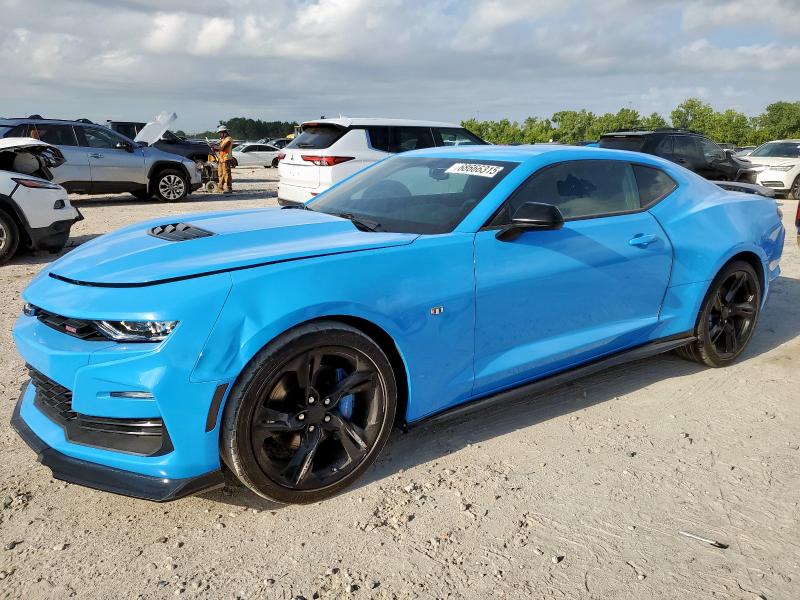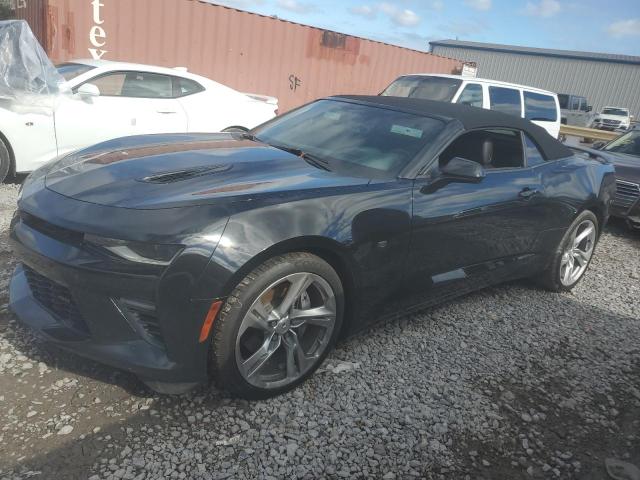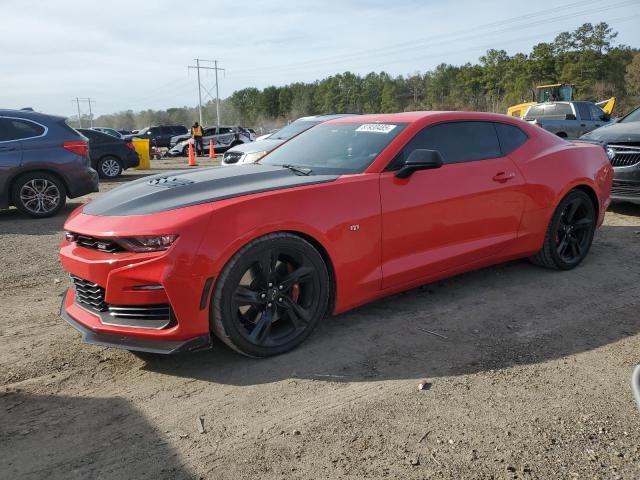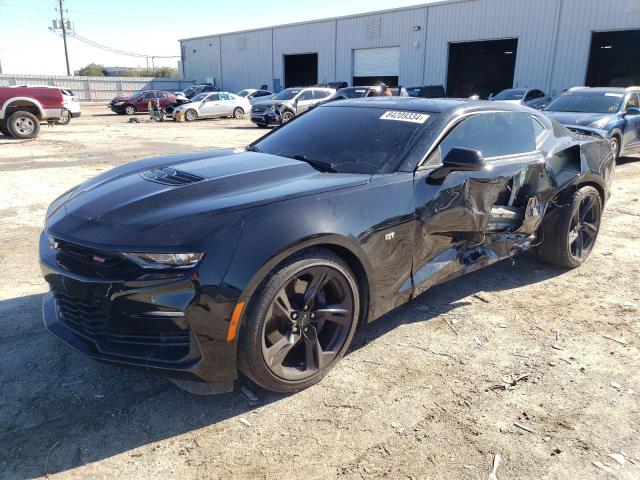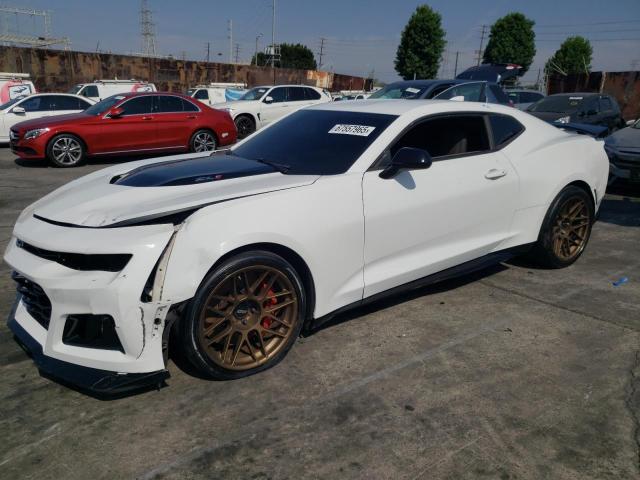2015 CHEVROLET CAMARO | 2G1FK3DJ3F9286524
Lot details
- Sale Date2025-06-16
- Lot Number42377528
- ACV13575 $
- Sale documentClear (Georgia)
- LocationTifton (GA)
- Odometer52,174 miles (83,966 km)
- Primary DamageFRONT END
- SellerTitleMax
Vehicle specifications
4
~$55,000
Engine: 6.2L Supercharged V8
Torque: 754 Nm
0–100 km/h: ~3.8 s (auto)
The 2010–2015 Chevrolet Camaro revived the muscle car segment with bold retro styling and serious performance engineering. Even in its base V6 trims, the Camaro offered a wide track, independent rear suspension, and balanced weight distribution that allowed for genuinely athletic behavior. The SS models, equipped with a 6.2L V8 and available manual transmission, delivered raw muscle in a chassis capable of handling it.
The ZL1, with its 580-hp supercharged engine, magnetic ride suspension (borrowed from the Corvette), and high-performance brakes, pushed the Camaro into supercar territory for a fraction of the cost. Meanwhile, the Z/28 focused on the racetrack, with aggressive aerodynamics, reduced weight, and a 7.0L naturally aspirated V8, solidifying the platform’s versatility.
Visually, the Camaro’s aggressive stance, low roofline, wide hips, and functional aero made its intentions clear. Inside, sport seats, auxiliary gauges, and available Recaros (Z/28) reinforced the dynamic purpose.
With this generation, the Camaro evolved from straight-line brute to a genuine all-around performance machine — earning its place in any sport-focused vehicle catalog not just through horsepower, but also through engineering refinement and enthusiast credibility.
Final Bid Chevrolet Camaro (2015)
$11,400
$16,520
$30,000
Body Styles
The fifth-generation Camaro was offered as a 2-door coupe and later as a 2-door convertible, with design inspiration directly lifted from the 1969 original. Its bold proportions, wide stance, narrow grille, and high beltline gave it a retro-modern aesthetic that stood out in the 2010s. The convertible, introduced in 2011, featured a power soft top and reinforced underpinnings for chassis rigidity.
The ZL1 added an aggressive front splitter, unique hood with functional heat extractor, and magnetic ride control. The Z/28 was the most track-focused Camaro of the era, with wide aero fenders, front dive planes, and reduced weight through deletion of A/C and sound insulation. All versions used a rear-wheel-drive layout on GM’s Zeta platform, shared with the Pontiac G8 and Holden Commodore.
Model Name Meaning (Manufacturer)
The name “Camaro” was originally chosen in 1966 from internal brainstorming. While GM claimed it meant “friend” or “companion” in a made-up language, it was actually meant to evoke speed, muscle, and friendly rivalry — particularly with Ford's Mustang. In the 2010 revival, Chevrolet leaned heavily into the Camaro’s heritage to position it as both a spiritual successor to the original pony car and a modern performance machine.
The fifth-generation was launched as a halo car, reestablishing the Camaro as a core brand identity and reigniting a muscle car war that had faded by the early 2000s.
Model Name Meaning (Languages)
“Camaro” has no direct meaning in English, French, or Spanish, which allowed Chevrolet to build an identity around the name itself. It’s treated as a stand-alone brand term with nostalgic weight — especially in North America. Globally, the word is phonetically powerful, easily pronounced, and immediately associated with American performance. Its absence of real linguistic roots became a strength, giving Chevrolet full freedom to craft meaning through design and racing legacy.
Body & Interior Colors and Rims
The Chevrolet Camaro marked the dramatic return of the iconic American muscle car, reviving retro styling with modern performance and customization options. This fifth-generation Camaro was bold, aggressive, and instantly recognizable — and Chevrolet reinforced this identity through a striking palette of exterior colors, expressive interior themes, and a wide range of wheel designs that spanned from retro-inspired to racetrack-ready.
The exterior color palette celebrated the Camaro’s heritage and aggressive design language, offering a mix of classic muscle car tones and bold, modern finishes. Timeless colors like Summit White, Black, and Victory Red formed the foundation, while metallics such as Cyber Gray Metallic, Silver Ice Metallic, and Ashen Gray Metallic added a more refined, contemporary edge. High-impact hues like Inferno Orange Metallic, Rally Yellow, and Synergy Green were fan favorites, especially on SS and RS trims, highlighting the Camaro’s muscular lines and flared fenders. Chevrolet also released special edition colors such as ZL1-exclusive Crystal Red Tintcoat, Deep Magenta Metallic, and Blue Ray Metallic, which further expanded the personalization palette. Many trims and packages offered black racing stripes, matte hoods, or heritage-style hash marks, reinforcing the Camaro’s motorsport DNA.
Inside, the fifth-gen Camaro embraced a retro-modern aesthetic, featuring dual-pod gauges, ambient lighting, and performance-inspired details. Base trims used cloth upholstery in Black, Gray, or Beige, while mid and upper trims introduced leather-trimmed seats in Black, Inferno Orange, Adrenaline Red, or Mojave. The iconic Inferno Orange interior package added orange accents on the seats, dash, and door panels, while RS and SS models offered contrast stitching and leather-wrapped steering wheels and shift knobs. Higher-performance models like the ZL1 and 1LE featured suede microfiber inserts, flat-bottom steering wheels, and optional Recaro sport seats, reinforcing their track-ready focus. The Interior Accent Trim Package allowed buyers to color-match dashboard and console panels with exterior colors like Red, Yellow, or Orange, adding another layer of personalization.
Wheel options were a core visual element of the Camaro’s design, ranging from 18-inch 5-spoke alloys on base models to 20-inch polished or blacked-out wheels on RS and SS trims. The RS package added unique midnight silver or bright machined 20-inch wheels, while 1LE performance models featured 20-inch forged aluminum wheels in matte black, wrapped in wider, track-focused Goodyear Eagle F1 tires. The ZL1 offered exclusive five-spoke or split-spoke forged wheels, optimized for strength and cooling, often paired with Brembo brakes and visible red or black calipers. Optional dealer accessories and appearance packages introduced wheel finishes like chrome, satin graphite, and gloss black, allowing owners to fine-tune their Camaro’s stance and attitude. Some trims even featured heritage-style rally wheels with modern engineering, bringing nostalgic design into the 21st century.
Top Expensive Options
- RS Appearance Package (HID lights, 20" wheels): ~$1,350
- 2SS / 2LT Interior Upgrade (leather, MyLink, ambient lighting): ~$2,000
- Magnetic Ride Control (ZL1/Z/28): ~$1,500
- Brembo Brakes (standard on SS+): ~$1,200
- Recaro Performance Seats (ZL1/Z28): ~$1,500
- Dual-Mode Performance Exhaust (SS/ZL1): ~$900
- Convertible Power Top + Rear Spoiler: ~$5,000
- Navigation and Boston Acoustics Audio System: ~$1,200
- Special Paints (Synergy Green, Inferno Orange Metallic): ~$400–$995
- Carbon Hood Insert (ZL1): ~$1,200
vs Competitors
The 2010–2015 Camaro reignited the battle with the Ford Mustang and Dodge Challenger. Against the Mustang GT (S197), the Camaro SS was heavier but better balanced, with IRS and a more premium interior. While the Mustang had sharper steering, the Camaro offered a smoother ride and greater high-speed confidence.
The Dodge Challenger provided better space and comfort, but lagged behind in agility and chassis tech — especially before its 2015 Hellcat revision. The Camaro ZL1 matched the Mustang Shelby GT500 in straight-line speed but beat it in ride quality and braking. The Z/28 was aimed squarely at track purists and shocked reviewers by outperforming many European sports cars on twisty circuits — at the cost of comfort and practicality.
Fun Fact
The Camaro Z/28 lapped the Nürburgring in 7:37.4, faster than a Porsche 911 Carrera S of the time. It used carbon-ceramic Brembo brakes, a 7.0L LS7 V8 sourced from the Corvette Z06, and Trofeo R tires that required heat cycling to maximize grip. It even came without air conditioning or sound insulation by default — making it one of the most hardcore track-ready cars GM ever sold. The 2010 Camaro was also the hero car in Transformers, where it reintroduced Bumblebee to a new generation of fans.


